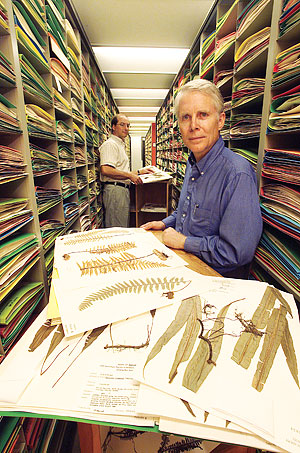 At 5pm on Sunday January 6, 2008, California Academy of Sciences closed its temporary location in order to start the move back to Golden Gate Park. On September 27, 2008 the Academy will open to the public once again in its new home in the Park. Many curious museum-goers have asked, why the long gap between closing and opening? 265 days is long time to move across town.
At 5pm on Sunday January 6, 2008, California Academy of Sciences closed its temporary location in order to start the move back to Golden Gate Park. On September 27, 2008 the Academy will open to the public once again in its new home in the Park. Many curious museum-goers have asked, why the long gap between closing and opening? 265 days is long time to move across town.
What is on the public floors of the museum is just the tip of the iceberg of the Academy's collections. Over a span of more than 150 years, the Academy has built an invaluable collection that acts as a strong backbone for the museum. Twenty million research specimens and 38,000 live animals have to be carefully packed and transported. The Academy is undertaking the most massive move ever undertaken by a museum.
The Botany collection was the first to move out of Howard Street. It took only eleven and a half days to move two million specimens. For perspective, it took 61,300 cardboard inserts bundled with over 40 miles of twine to bundle the flora. Botany is only one of eight Academy research departments preparing to move.
The Academy's packing list is as varied as its research. Ornithology and Mammalogy have to transport Monarch, the last Grizzly bear of California. Because of its size and girth, it will not be boxed. However, it will take several movers to transport it carefully. Monarch will be joined by 30,000 other mammal specimens, including study pelts, skulls, skeletons, and the world's largest collection of marine mammal specimens.
It will be even more challenging to move the Academy's live animals. 38,000 live animals will be moved, water included, back to the Park in tanks of varying sizes. One of the aquarium's Australian Lungfish will be the oldest living animal to move. Over seventy years old, this fish has seen the Academy through many changes-- a move to Howard Street, and now the move back to Golden Gate Park.
